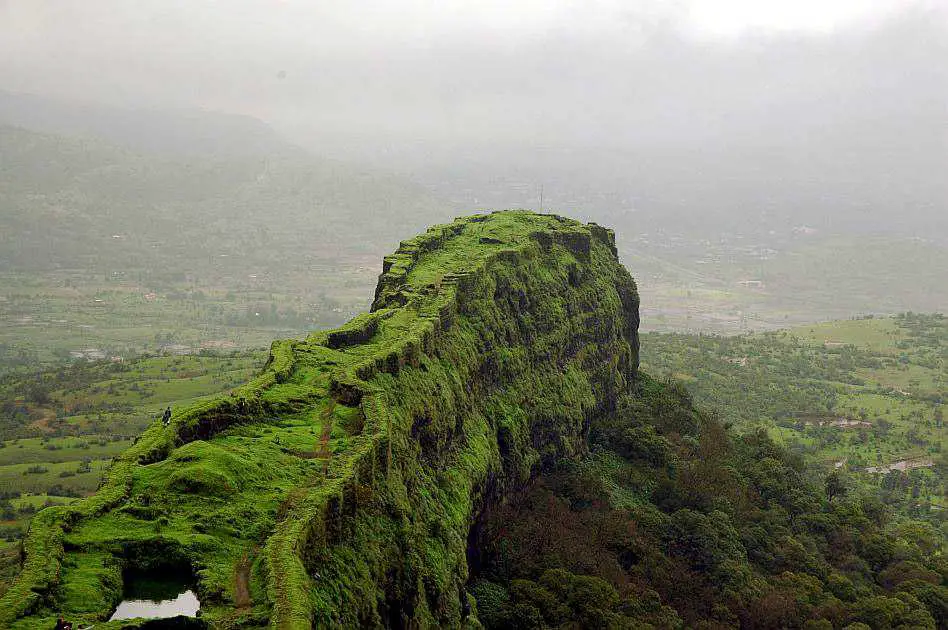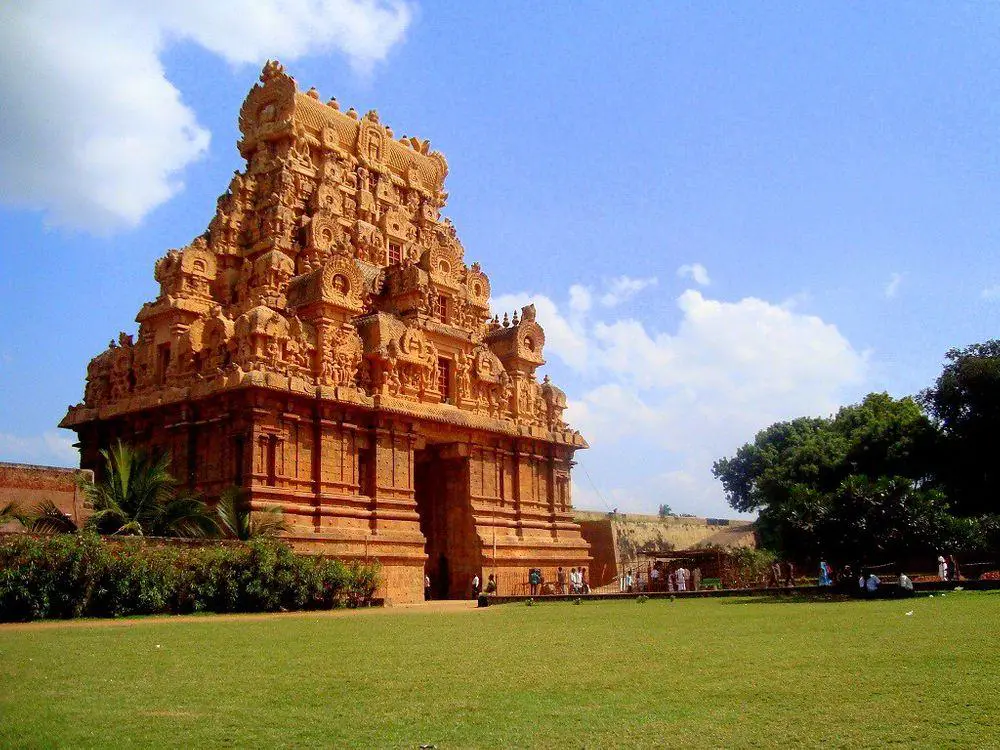World 🢖 Asia 🢖 India 🢖 Maharashtra
Jain shrines 🢔 Religious architecture 🢔 Architectural wonders 🢔 Categories of wonders
Wonder
Ankai-Tankai Caves
 In short
In short
The steep hills of Satmala Range south from Manmad hide numerous exciting monuments of nature and history. Some of the most impressive and exciting monuments are twin table-mountains – Ankai and Tankai – whose sheer walls rise up to 275 m high above the surrounding landscape.
 35.3%
35.3%
GPS coordinates
Location, address
Age
Religion
Map of the site
If you see this after your page is loaded completely, leafletJS files are missing.
 In detail
In detail
Plateaus on the top of both hills have served as fortresses in the past – these are the exotic Ankai-Tankai hill forts. But both hills contain also old and sometimes lavishly adorned rock-cut shrines – Ankai-Tankai Caves, made in the dark basalt approximately 700 – 1000 years ago.
Ankai Caves are simple Hindu shrines located on the plateau of Ankai Hill. Tankai Caves, in turn, are lavishly decorated Jain caves located at the foot of Tankai Hill.
Tankai Caves
Close to Kusur (Ankai) village, at the southern foot of Tankai Hill there is located a group of 7 – 8 Jain rock-cut caves. Caves are located at the popular tourist route leading to the summit of both table mountains.
Tankai Caves are comparatively small but rich with adornment – unfortunately, most of the sculptures are defaced now.
First cave has two floors. The front of the lower floor contains two pillars, adorned with two sculptures facing each other. The portal leading from the veranda into the shrine is covered with stone carvings, overloaded with detail if compared to the simple and small hall behind it. The hall behind it is roughly square, supported by four columns with finely carved capitals. Space between columns is adorned with lotus. Style of details hints that the chamber has been made around the 11 – 12th century AD. At the rear wall of the hall, there is an empty shrine with a beautifully adorned portal, with five human figures at each side of the door.
The second floor has two rather simple pillars at the front of the veranda. The floor in the upper story is perfectly plain.
Second cave also has two storeys. Veranda on the first floor is 8 by 2.7 m large, adorned with large sculptures at both sidewalls. The front part of the veranda is not formed with pilasters – it is closed with a perforated wall. Inside the veranda to the left is Indra seated on an elephant. This sculpture is not cut from the live rock but from large blocks carried from elsewhere instead. To the right is shaped Indrani or Amba – villagers have repainted it turning the deity into Bhavani.
Portal leading into the hall is lavishly decorated. Hall is roughly shaped, with a small vestibule leading to a shrine at the rear wall. The portal leading towards the shrine has few decorations – could be mentioned Tirthankara above the door. Shrine seems to be not completed. The second floor is lighted through holes forming ornament. The interior contains figures of lions, the hall is only partly excavated.
The front wall of the third cave is formed like a perforated screen as well. The front hall is 7.5 m deep and just some 2.5 m wide. The rear wall contains sculptures of badly defaced Indra and Amba in a group with dwarves and alligators. Follows a 6.5 x 7.5 m large hall with four pillars and beautiful lotus carving between the columns. The portal leading back to the veranda is adorned with wonderful sculptures of naked man – Jain saints (possibly – Shantinath and Parshvanath) – standing in a group of people and mythical animals. Style hints that this stone carving could be created around the 12th – 13th century AD.
After the hall follows a shrine with a trap hole into a smaller room below. This smaller room contains a figure of Thirtankar inside – it is possible that this shelter was created as a response to Muslim raids against other religions.
In the front of verandah of fourth cave there are two massive square pillars. Verandah is 2.5 x 9 m large. The portal leading into the hall is lavishly adorned. Hall is 5.5 m deep and 7 m wide, with two pillars and two pilasters dividing it in front and rear parts. The rear wall has a bench along the whole width – it serves as a step to the shrine. The cell of the shrine has been started but is not completed.
One pillar in verandah contains a barely legible inscription from the 11th – 12th century AD.
Other caves are incomplete, smaller and partly collapsed, and filled with soil. Still visible is the ornate door portal and image of Tirthankar.
Ankai Caves
Ankai Hill contains three Hindu rock-cut caves – all are roughly shaped and unfinished.
First cave is unfinished ling shrine. It is located inside the second gate on the ascent to the fort. The facade of this cave is rich with stone carvings. Entrance is 5 x 2.5 m large. At each side of the entrance is located a small group of sculptures – female in the center with a dwarf and a maid-servant carrying an umbrella. The forepart of the cave is 4 m deep, then follows a cell with a shrine. Shrine contains base for the ling, rear wall contains sculpted three-headed bust – trimurti. Style of sculptures hints that the cave has been created in the 10th – 11th century.
At the base of Ankai summit there are two more rock-cut chambers without ornamentation. One huge chamber is a Hindu hermitage with a smaller cell inside. The entrance has two simple pillars, it is 9.5 m wide, the cave is 14.5 m deep. Inside, in the left wall, there have been started three cells. The cave is divided by brick and mud partitions – possibly it has been used as a storehouse in earlier times. Possibly this cave is the same Hindu hermitage – Ashram – described in other sources, devoted to Agastya Muni – Hindu saint, the first Aryan crossing the Vindhya Mountains and maintained as a temple by Hindu baba – ascetic up to this day.
Next to this cave there is one (according to some sources – several) more cave used by devotees coming here during the sacred month of Shravan in late summer. This is irregular excavation, some 10 m wide, with two rough pillars in front and two deeper inside. At the front of this cave, there is a rock-cut cistern.
References
- Ankai Tankai, Nashik District Gazetteer, accessed in 6 May 2010.
- Ankai-Tankai-Gorakshanath, a photoblog by Rohan Rao, accessed in 5 May 2010.
- Ankai-Tankai-Gorakshanath, Picasa, photo collection by sameer, accessed in 5 May 2010.
 Linked articles
Linked articles

Wonders of Maharashtra
Maharashtra is a truly splendid state. It has everything – enormous metropolises and countless waterfalls in mountains, urban decay, and architectural splendor, remnants of millennia-old Harappan towns, and modern, very expensive architecture.

Wonders of India
India is the seventh-largest country in the world by area, and, naturally, such a large area contains a huge amount of exciting attractions…
Wondermondo considers that India is the second richest center of architectural heritage in the world after Europe and maybe no single country in the world can match it in this respect.

Hindu shrines
Hinduism is one of the oldest religions – possibly the oldest one among contemporary religions and Hindu temples belong to the most impressive religious buildings in the world.
 Recommended books
Recommended books
India Unveiled: Spirit, Tradition, People
This is the one book you need to understand the spirit of India. Internationally acclaimed as the best book of its type on India, this sixth expanded, revised edition of the multi-award-winning book India Unveiled: Spirit, Tradition, People by Robert Arnett truly reveals the diversity and sacredness of the oldest continuously living civilization on earth.
Living Rock: Buddhist, Hindu and Jain Cave Temples in the Western Deccan
Buddhist, Jain, and Hindu rock-cut temples and monasteries seen in a long, collaborative context.


